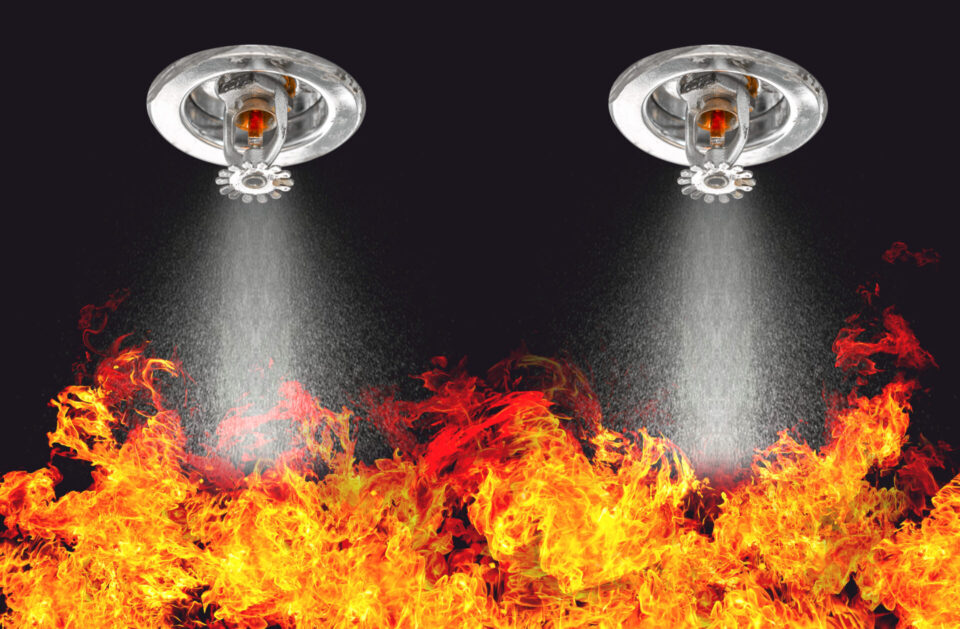How big is the fire sprinkler market?
The latest report by IMARC Group, titled “Fire Sprinklers Market: Global Industry Trends, Share, Size, Growth, Opportunity and Forecast 2023-2028”, offers a comprehensive analysis of the industry, which comprises insights on the fire sprinklers market report. The report also includes competitor and regional analysis, and contemporary advancements in the market. The global fire sprinklers market size reached US$ 12.2 Billion in 2022. Looking forward, IMARC Group expects the market to reach US$ 18.0 Billion by 2028, exhibiting a growth rate (CAGR) of 6.6% during 2023-2028.
Fire Sprinklers Market Overview:
Fire sprinklers are an active fire protection method, providing sufficient pressure and flow rate to a water distribution piping system upon which the fire sprinklers are connected. They are generally installed as per building codes or recommended by insurance companies to lower property losses or business interruption. The main component of a fire sprinkler system discharges water when the fire is detected. It is a principal fire protection component used in several places, such as residential or commercial buildings, hospitals, factories, office spaces, schools, colleges, and sports stadiums, to protect assets and human lives. It can detect fire at the initial stage and, therefore, restrict the spread of fire with minimal water usage. The system installed on ceilings comprises a water source, sprinkler head, and a pipe for water distribution. The fire sprinkler automatically releases water from the pipe when the fire is detected. The essential components of a fire sprinkler system include an alarm test valve, alarm valve, fire sprinkler head, mechanized alarm bell, and stop valve.
Request Free Sample Report: https://www.imarcgroup.com/fire-sprinklers-market/requestsample
Global Fire Sprinklers Market Growth:
The global market is majorly driven by significant growth in the construction industry. In line with this, the rising concerns regarding workers’ safety at construction sites significantly contributes to the market growth. Furthermore, rapid technological advancements, such as BIM (building information modeling), the Internet of Things (IoT), alarms, and advanced sensors, are offering numerous growth opportunities in the market. Apart from this, several governments worldwide are enforcing stringent regulations on fire sprinkler installations in public and private establishments, which, in turn, is creating a positive outlook for the market.
Moreover, the growing smart home construction and the increasing demand for domestic automation are catalyzing the market. Besides, the improved standards of living are propelling the market expansion. Additionally, the escalating need to safeguard life and the environment from fire emergencies is favoring the product adoption. Some of the other factors driving the market include considerable growth in the real estate industry and the augmenting awareness regarding decreased insurance expenditure.
Key Market Segmentation:
Top Key Players in Fire Sprinklers Industry:
- Honeywell International
- Johnson Controls
- Minimax GmbH & Co. KG
- API Group Inc.
- United Technologies Corporation
- Robert Bosch GmbH
- Hochiki Corporation
- VT MAK
- Siemens AG
Breakup by Product Type:
- Wet Pipe Fire Sprinklers
- Dry Pipe Fire Sprinklers
- Deluge Systems
- Pre-Action Systems
- Others
Breakup by Service:
- Engineering Services
- Installation
- Design Maintenance
- Inspection
- Managed Services
- Others
Breakup by Component:
- Stop Valve
- Alarm Valve
- Fire Sprinkler Head
- Alarm Test Valve
- Motorized Alarm Bell
Breakup by Application:
- Commercial Applications
- Residential Applications
- Industrial Applications
Breakup by Technology:
- Active Fire Protection
- Passive Fire Protection
Breakup by Region:
- North America (United States, Canada)
- Europe (Germany, France, United Kingdom, Italy, Spain, Others)
- Asia Pacific (China, Japan, India, Australia, Indonesia, Korea, Others)
- Latin America (Brazil, Mexico, Others)
- Middle East and Africa (United Arab Emirates, Saudi Arabia, Qatar, Iraq, Other)

